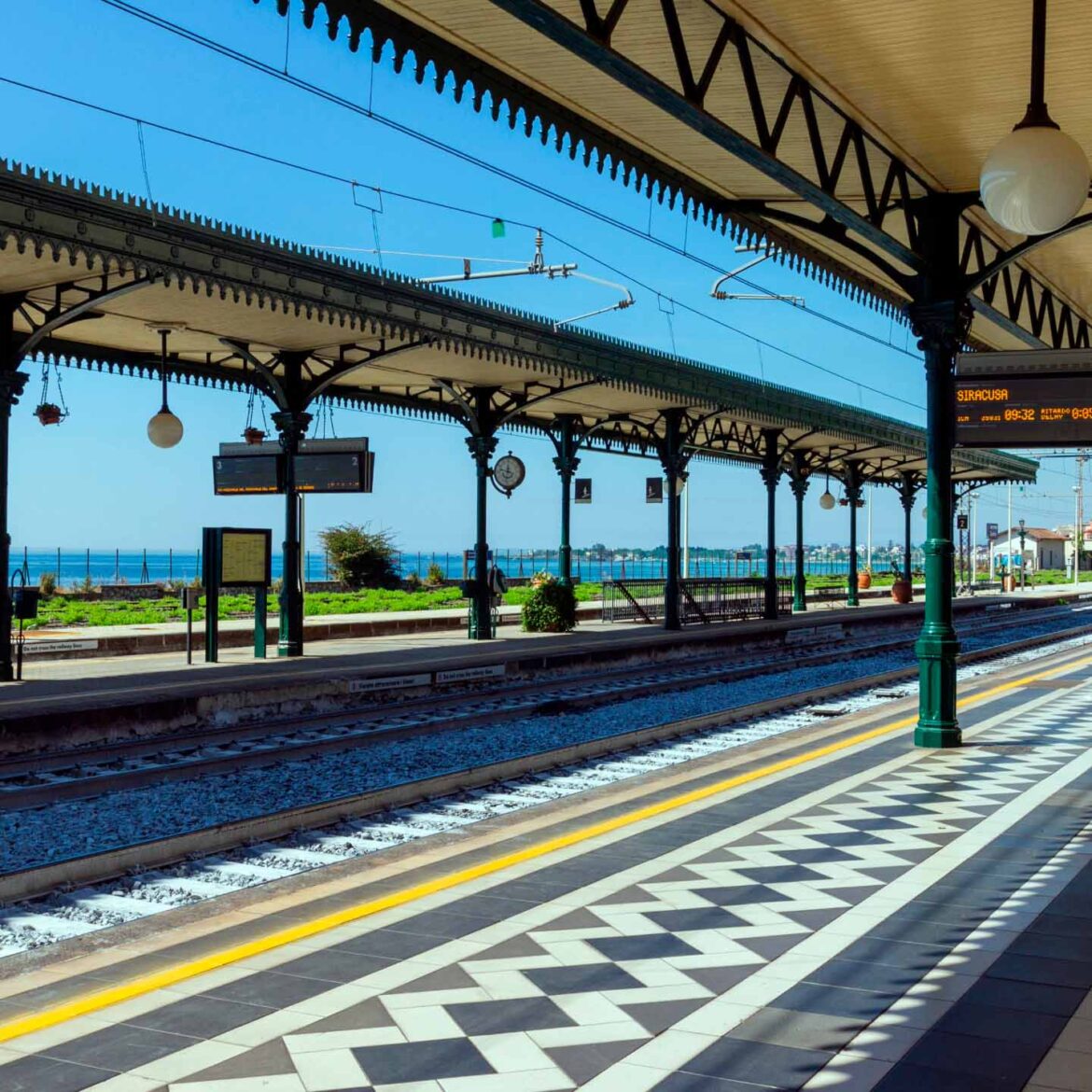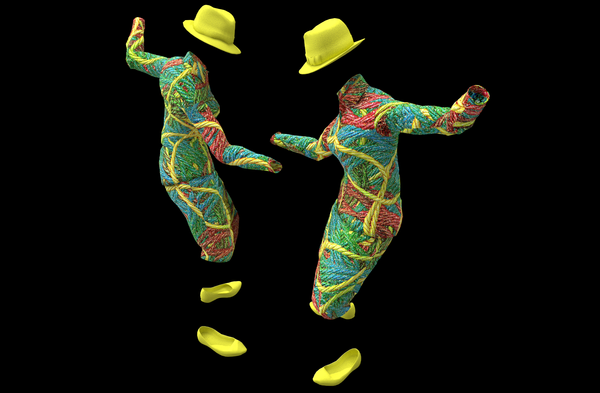Taormina, a scenic town on the east coast of Sicily, is famed for its stunning vistas, ancient ruins, and vibrant cultural life. Perched high above the Ionian Sea, Taormina has long been a favored destination for travelers seeking a blend of history, beauty, and Mediterranean charm.
Central to Taormina’s accessibility and growth as a tourist hotspot is its train station, officially named Taormina-Giardini. This station has facilitated travel and played a critical role in the town’s historical and economic narrative. Here, we will explore the multifaceted contributions of Taormina's train station to the town's history and its connections to other Sicilian cities.
Historical Significance
Origins and Early Development
The establishment of Taormina in 1866 marked a transformative period in Taormina’s history. Before the advent of the railway, Taormina was relatively isolated due to its mountainous terrain. The railway’s introduction was part of a broader effort to modernize infrastructure across Sicily following the unification of Italy. The station's opening connected Taormina to significant cities like Catania and Messina, making it accessible to tourists and traders. This accessibility was crucial in shifting Taormina from a secluded town to a burgeoning tourist destination.
The railway facilitated the influx of tourists, particularly European aristocrats and artists enamored with Taormina's natural beauty and cultural heritage. This period saw the construction of grand hotels and villas, many of which still stand today, reflecting the architectural and social changes brought about by the railway.

Timeless Grecian Etna VI © Nicholas V. K.
“Timeless Grecian Etna VI” © Nicholas V. K. · Instant Download
World War II and Post-war Era
The strategic importance of Taormina’s train station during World War II made it a target for bombing raids. The station and surrounding areas suffered significant damage, disrupting transport and local life. The station's post-war reconstruction was a symbol of resilience and recovery. The renewed infrastructure supported a post-war tourism boom, as the station once again became the gateway for international visitors drawn to Taormina’s allure.
The 1950s and 1960s marked a golden era for Taormina, with the train station playing a pivotal role. The improved connectivity brought waves of tourists, leading to economic prosperity and cultural enrichment. This period also saw Taormina host international film festivals and other cultural events, further cementing its status as a global tourist destination.
Architectural Charm
Design and Aesthetics
Taormina-Giardini train station is an architectural gem, blending traditional Sicilian design elements with the functionality required of a transport hub. The station features elegant facades adorned with intricate stucco work, arched doorways, and large windows that allow natural light to flood the interior. The building’s design is a testament to the architectural trends of the late 19th century, reflecting both local craftsmanship and broader European influences.
The station’s interior is equally impressive, with high ceilings, decorative tiles, and period furnishings that evoke a sense of nostalgia and grandeur. Preserving these features has made the station a point of interest for travelers, architecture enthusiasts, and historians.
Preservation and Restoration
Local authorities and heritage organizations have prioritized preserving the architectural integrity of Taormina-Giardini station. Restoration projects have focused on maintaining the original features while upgrading facilities to meet modern standards. These efforts ensure that the station remains a functional transport hub and a historical landmark that continues to attract visitors.
The station's restoration has included repairing structural damage, restoring decorative elements, and implementing modern amenities such as digital information displays and accessibility features. These initiatives have been crucial in maintaining the station’s historical value while enhancing passengers' travel experience.

Economic Impact
Boosting Tourism
The train station’s role in boosting tourism in Taormina cannot be overstated. By providing easy access to the town, the station has enabled a steady flow of tourists, which has been the backbone of Taormina’s economy. The influx of visitors has led to the proliferation of hotels, restaurants, shops, and cultural attractions, contributing significantly to the local economy.
The growth of related services like tour operators, transportation, and guided tours has also benefited from the train station's tourism. These businesses cater to the needs of tourists, providing employment opportunities for residents and contributing to the overall economic health of Taormina.
Employment and Local Economy
The train station's economic benefits extend beyond tourism. The station itself provides jobs for railway staff, maintenance crews, and administrative personnel. Additionally, the increased accessibility has attracted investment in various sectors, including real estate, retail, and hospitality.
Local businesses have thrived due to the steady stream of visitors. Markets, cafes, and artisan shops cater to tourists, offering products ranging from traditional Sicilian crafts to gourmet food items. This economic activity has fostered a vibrant local economy, supporting families and contributing to the community's overall well-being.
Enhancing Connectivity
Linking Sicilian Cities
Taormina-Giardini station is a crucial link between Taormina and other major Sicilian cities. The railway network connects Taormina to Catania, Messina, Palermo, and beyond, facilitating the movement of people and goods. This connectivity has been vital for trade, allowing local products to reach broader markets and bringing goods from other regions into Taormina.
The train station provides essential connectivity for residents, enabling easy work, education, and healthcare travel. The ability to commute to larger cities has expanded opportunities for Taormina’s residents, contributing to improved quality of life and economic prospects.
Cultural and Social Exchange
The train station has also been a conduit for cultural and social exchange. The ease of travel has brought diverse cultural influences to Taormina, enriching its social fabric. The accessibility that the railway provides has helped festivals, cultural events, and artistic exchanges draw participants and audiences from all over Sicily and beyond.
This cultural exchange has made Taormina a cosmopolitan town, blending local traditions with international influences. The result is a dynamic cultural scene that draws visitors and fosters a sense of community among residents.
Taormina, Train Station
Modern Developments and Future Prospects
Technological Upgrades
Taormina-Giardini station has undergone various technological upgrades to meet the demands of modern travel. These improvements include digital ticketing systems, real-time information displays, and enhanced security measures. These upgrades have streamlined operations and improved the passenger experience, making the station more efficient and user-friendly.
The modernization efforts extend to the railway infrastructure, with investments in new trains and upgraded tracks to ensure faster and more reliable services. These developments are essential in maintaining the station’s relevance in an increasingly competitive transportation market.
Sustainability Initiatives
Sustainability has become a key focus in the operation of Taormina-Giardini station. Initiatives such as energy-efficient lighting, waste reduction programs, and promoting eco-friendly travel options align with broader environmental goals. These efforts contribute to reducing the station’s ecological footprint, making it a model for sustainable transportation in Sicily.
The station's commitment to sustainability includes adopting renewable energy sources, such as solar panels, and implementing green building practices. These measures ensure that the station operates efficiently while minimizing its environmental impact.
Personal and Anecdotal Stories
Famous Visitors
Over the years, Taormina has hosted numerous famous visitors, many of whom have arrived via the train station. Notable figures such as D.H. Lawrence, Tennessee Williams, and Greta Garbo have passed through Taormina-Giardini station, adding a touch of glamour to its history. These stories enhance the station’s cultural significance, making it a landmark of historical interest.
The presence of celebrities has often drawn media attention, further promoting Taormina as a desirable destination. This celebrity connection has contributed to the town’s allure, attracting tourists eager to walk in the footsteps of famous personalities.

Local Narratives
For residents, the train station is interwoven with personal and communal memories. Generations have used the station for travel, creating a rich tapestry of stories and experiences. The station has been a backdrop to countless personal narratives, from family reunions to daily commutes.
These local stories provide a human dimension to the station’s history, highlighting its role in the lives of Taormina’s residents. The station is not just a point of transit but a place of significance in the community’s collective memory.
In Summation
Taormina's train station is a vital part of the town's history and connection to the rest of Sicily. Its contributions to tourism, the local economy, and cultural exchanges are profound. The station’s architectural beauty, economic impact, and role in enhancing connectivity underscore its significance. As Taormina-Giardini station continues to evolve with modern upgrades and sustainability initiatives, it remains a crucial link connecting this enchanting Sicilian town's past, present, and future.






